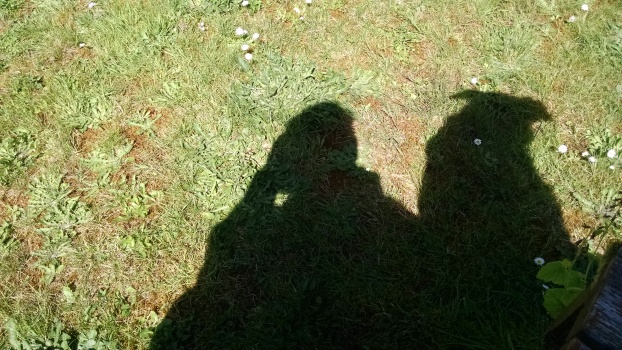 My dryer buzzes a Bb. My oven timer sings out a high D and the microwave offers a B above middle C. The doorbell ding-dongs a pleasant F down to D, but the tea kettle, old and weary, starts at F# and tends to go flat. My house is very musical. I’ll bet yours is, too.
My dryer buzzes a Bb. My oven timer sings out a high D and the microwave offers a B above middle C. The doorbell ding-dongs a pleasant F down to D, but the tea kettle, old and weary, starts at F# and tends to go flat. My house is very musical. I’ll bet yours is, too.
I’m a little nuts, but as a musician, I can’t help checking out the pitch of things I hear. I ping the crystal glass with my fingernail and find myself humming and running to the piano. What is it?!! I have pretty good relative pitch, so I am usually close, but I’m not sure until I check. It’s the D next to middle C, very pleasant. I try my ordinary water glass: A, not bad. I check the seat belt warning beeper in my car: C above middle C, very annoying. The Honda horn: a blatty G#.
I’m on a roll. Why write when you can Google stuff? It turns out there’s a science behind the sounds our possessions make. Sound engineers actually work hard to find the right sounds for the right purpose. Higher pitched sounds are more unpleasant and therefore get our attention. They’re used for alerts and alarms. A low-pitched siren would not have the same effect and might not cut through the other noises in our lives. Lower-pitched sounds are more pleasant and are used for notifications, things we want to know, but it’s not a matter of life or death.
Sound designers look for sounds that will get our attention as needed. If the house is on fire, you don’t want a low A hum. You want a shrieking high G# that will wake you up. The typical bing-bong doorbell is a pleasant interruption. But think if the notes were changed to something minor or clashing.
I have noticed that, with the exception of my tea kettle, everything is right on pitch. This is quite amazing. picture some poor guy trying to tune an oven or a dryer. No, that’s not it. Beep. Not quite. Beep. Almost. Beep! Damn, now it’s sharp.
Maybe you’re not a musician. Maybe you’re not obsessed with determining the pitch of everything you hear. Maybe you agree with the yoga sound healers online who say that if you have to know what pitch the sounds are, you’re not going with the flow. They’re probably right. I can see me jumping out of my full lotus in the middle of a session to look for a musical instrument or use the pitch pipe on my phone. It’s a Bb! Okay, we can continue.
Sound healing is a real thing. You can buy bowls, bells, and gongs that are said to affect the different chakras—energy centers along your spine. Just close your eyes and feel the vibrations. Don’t ask what note it is. It’s actually very pleasant. You can read up on sound healing at http://www.dreamweaving.com/dwalsg.htm or https://www.devpreetkaur.com/sound-healing-instruments.
But back to the sounds in our houses. Pitches are sound-wave frequencies, measured in Hertz (Hz) and Kilohertz (kHz). The human ear with normal hearing is capable of detecting sound waves from approximately 20Hz to 20,000 Hz (20 kHz). One to three kHz is said to be the sweet spot where human hearing is most sensitive.
Up until the 1950s, manufacturers didn’t have the same options for sounds that we have in our computer-operated world. Think tiny hammers hitting tiny bells in a telephone. Today’s computer-powered cell phone ring tones can be virtually anything from an old-time bell to your favorite song.
Did you know you can listen to common sounds online and even download them to use on your website, movie, or recording? You can get buzzers and beeps, a duck quacking, a dog lapping water, or the noise of a busy restaurant. Visit www.freesoundeffects.com or https://www.soundsnap.com. You can buy sounds at 123rf, the same site where I often download pictures for this blog. At YouTube, search for “common sounds” and go crazy. You might want to wear ear buds or headphones for these; they’re not very loud.
I tried to figure out what pitch Annie speaks in. We had a long song session. She was trying to tell me to leave the computer alone and take her for a walk. She started with very low sounds, but as I tried to match her tones, soon we were all over the sound spectrum. That dog has a huge range compared to my tiny human one. Having won the sing-off, she dragged me down the street for a while, where we enjoyed the whoosh of the wind, the chirp of the birds, and the bark of the neighbors’ dogs.
You might wonder if I have more important things to do. Nope. I do the research so you don’t have to. What are you hearing at your house?
***********
